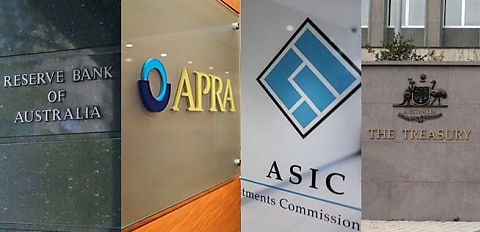During its regular quarterly meeting on 7 June, the Council of Financial Regulators (CFR or the Council) discussed the range of current and emerging vulnerabilities within Australia’s financial system.
The CFR stated that it continues to “closely monitor” risks to the country’s financial system from lending to households and businesses and has assessed that those risks “remain contained”.
The Council concluded that while household budget pressures persist, wrought by persistent inflation and high interest rates, the majority of borrowers have continued to honour their debt repayments.
However, members of the CFR have also observed that the cohort of borrowers falling behind on mortgage repayments, along with applications for hardship notices, has continued to climb, albeit from low levels.
Signs of borrower struggle in emerging data
Indeed, the latest report released by S&P Global ratings – the RMBS Performance Watch: Australia quarterly report (ended 31 March 2024) – found that RMBS prime mortgage arrears rose to 1 per cent, up from 0.95 per cent on the previous year and from a historical low of 0.58 per cent.
The report also found a quarter-on-quarter lift in arrears (December 2023 to March 2024) of 0.3 per cent.
In addition, a survey conducted by Finder recently found that 12 per cent of its respondents stated they have missed one or more mortgage repayments over the past six months.
This equated to 396,000 borrowers falling behind on repayments, with 4 per cent indicating at least one missed payment.
Moreover, a survey conducted by the Australian Securities and Investments Commission’s (ASIC) Moneysmart through YouGov found that 47 per cent of Australian adults with debt (around 5.8 million people) have said they’ve struggled to meet their repayments over the last year due to cost-of-living pressures, reduced income, and unexpected expenses.
Insolvencies in SMEs
Along with its regular quarterly meeting, the Council also held its annual meeting with regulators of the financial sector (ACCC, ATO, AUSTRAC, AGD, and ASFA).
During the meeting, the Australian Financial Security Authority (AFSA) noted that there had been an increase in insolvencies for both individuals and companies, particularly in small- to medium-sized enterprises (SMEs) over the last 12 months.
Indeed, the level of insolvencies was recently flagged by credit reporting agency CreditorWatch, which found that food and fuel retailing had the highest business failure rates within the retail industry, with a business failure rate of 5.4 per cent.
Anneke Thompson, CreditorWatch’s chief economist, said that she expects insolvencies in the retail sector to increase, particularly for “smaller, discretionary retailers” due to weak Australian consumer confidence that is unlikely to improve until there are cuts in the cash rate.
The chief economist said: “Only then will mortgage holders start to feel more confident that they have some breathing space in their monthly budget.”
[RELATED: Prime RMBS arrears hit 1%]

